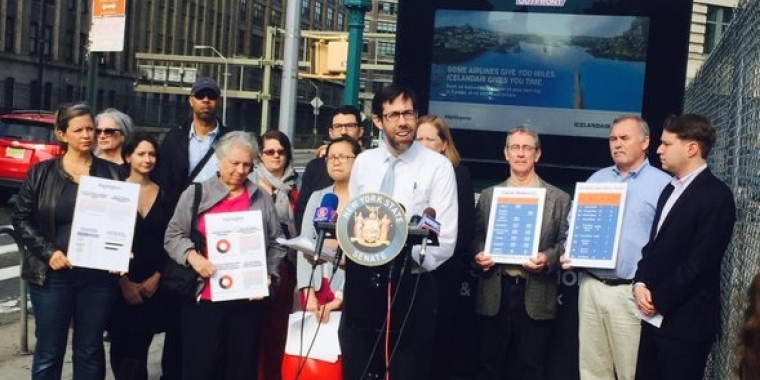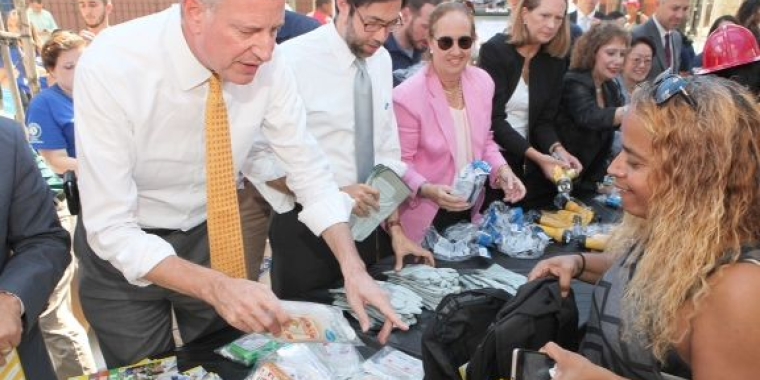
NY Times: Soon, L Will Mean Less Crowded, Subway Officials Say
By Michael Grynbaum
Want to find a seat on the L train? Head to the back three cars. Avoid peak hours entirely. And if it’s between 4 p.m. and 6 p.m. on a Saturday, forget it.
Hipster haven, mobile supper club, amateur burlesque: the L train is many things to many people. Many, many, many people: the line has some of the most overcrowded trains in the subway system, particularly on weekends, according to a detailed new study by New York City Transit.
This bit of news probably comes as no surprise to L train regulars, who often find themselves trying to squeeze into any available space.
But the report (see below) also offers an inadvertent manual for weary riders trying to beat the crowds. From 4 p.m. to 6 p.m. on Saturdays, for instance, the Brooklyn-bound L sometimes carries up to 35 percent more passengers than the prescribed maximum load. The lesson: midafternoon barbecues in Williamsburg are not recommended.
The good news for riders is that the sardinelike conditions may soon be coming to an end: subway officials have pledged to run more L trains on the weekends, starting in the summer of 2012, according to State Senator Daniel L. Squadron, a Democrat representing parts of Brooklyn and Manhattan whose office requested the study.
An extra train will also be added between 9 a.m. and 9:30 a.m. on weekdays, to ease the load on Manhattan-bound trains that are currently packed to capacity. That extra trip is scheduled to begin in December, the report said.
“It’s going to make a big difference,” Mr. Squadron said of the coming changes. “We have thousands and thousands of people who depend on the L on weekends, and they don’t feel they can count on it.”
The study found that since 1998, ridership on the L has grown at three times the rate of the subway system as a whole. On Saturdays and Sundays, the combined ridership has risen at an astounding pace: 141 percent, compared with 53 percent across the entire system. (Last year, the L line recorded more than 170,000 trips on an average weekend.)
In the mornings, Manhattan-bound trains are nearly bursting by the time they reach Bedford Avenue in Brooklyn and First Avenue in Manhattan. Last year, an average train passing through Bedford Avenue in the morning rush was filled to 116 percent of its stated capacity, the worst overcrowding on the L line since 2000.
To measure crowding, transit officials rely on “loading guidelines,” which vary by subway line and time of day. During peak hours, a car is considered at maximum load when every seat is filled and each standing passenger has three square feet of space. (For the L, this translates to about 1,160 riders per train.)
The study found that on average, cars toward the back of an L train are progressively less crowded than those in the front. The caboose, for instance, is the least crowded. Passengers in the front car, meanwhile, might as well be sardines: that car has 32 percent more riders than the maximum.
The problems are not limited to the weekday commute. When eastbound trains pull into First Avenue in Manhattan on weekend afternoons and evenings, they are routinely exceeding loading guidelines, which are lower during off-peak hours.
For now, there is little that transit officials can do: they are already running as many trains as the L line’s current signal system can accommodate. But the line is in the midst of being upgraded to a new, high-tech computerized system, which will be finished early next year after more than a decade of work. At that point, officials say, they can begin adding more trains that will ease the crowding — although they warn that a prolonged period of testing and evaluation must happen first.

